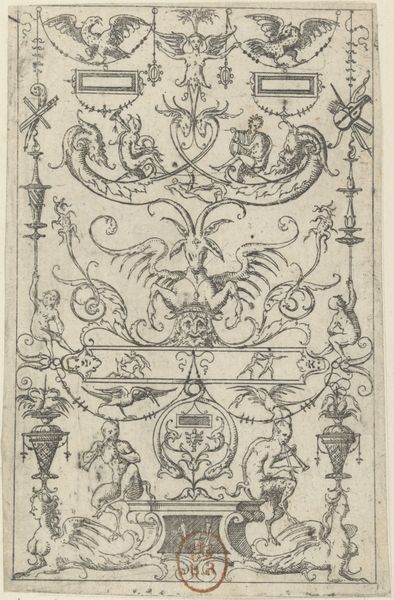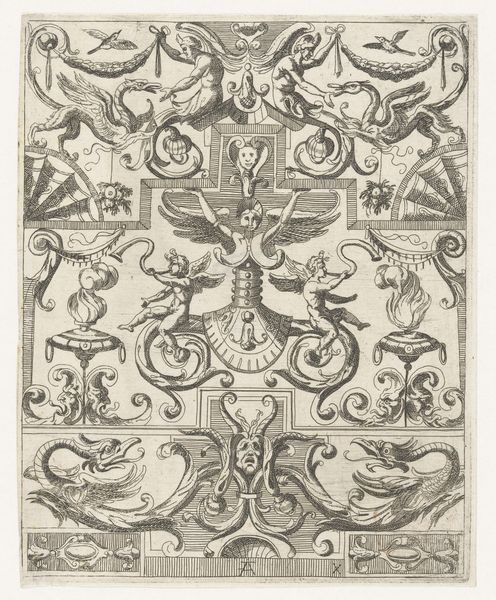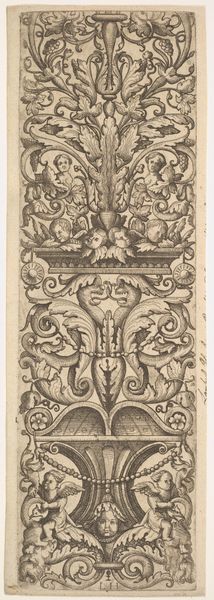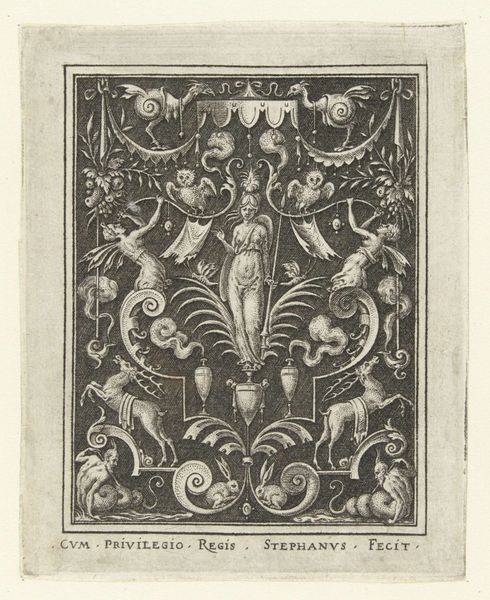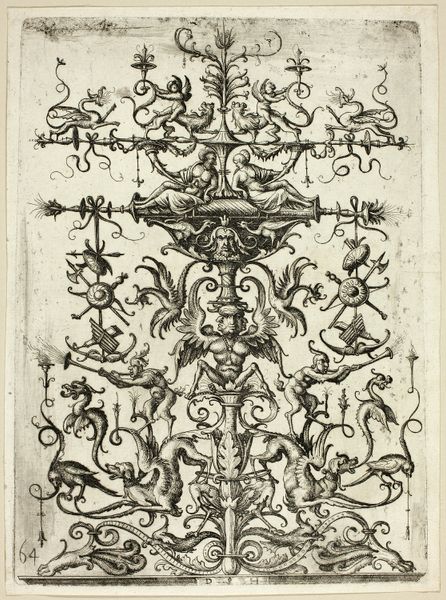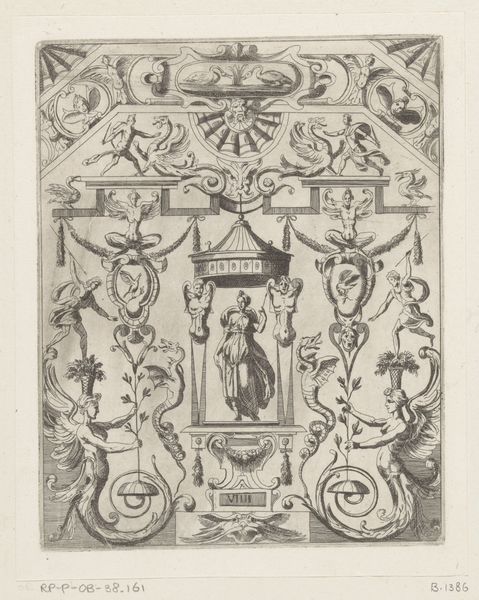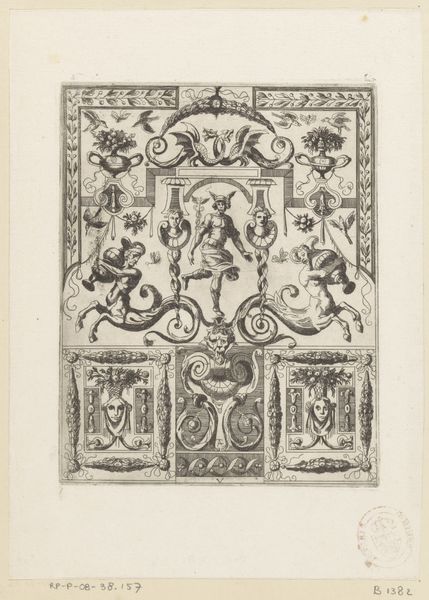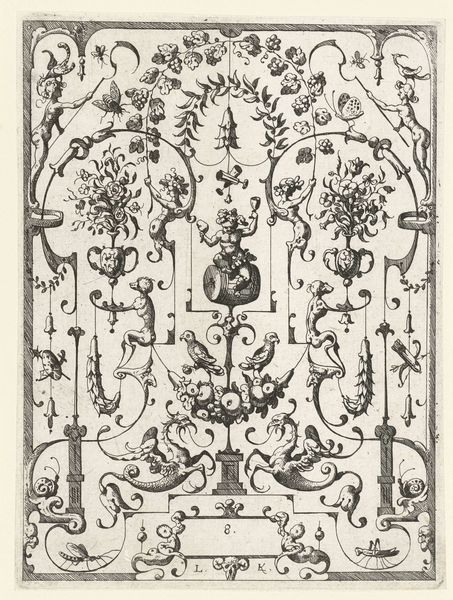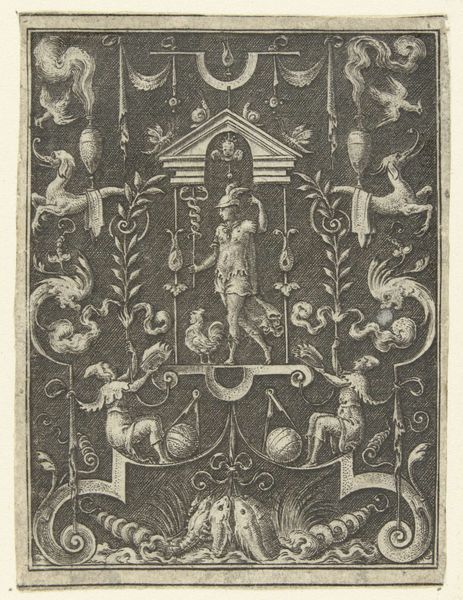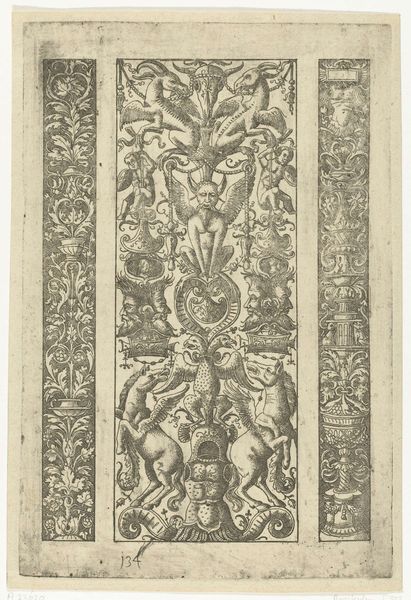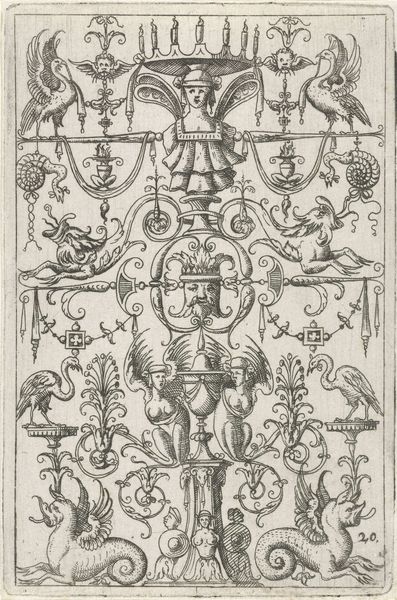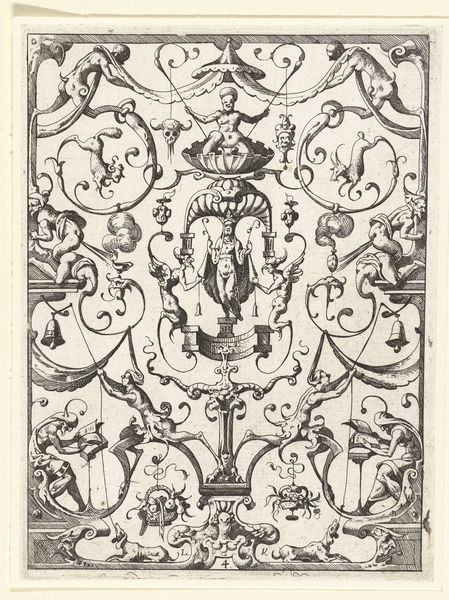
Four Children Playing, plate seven of Twelve Ornament Panels c. 1505 - 1515
0:00
0:00
drawing, ornament, print, paper, engraving
#
drawing
#
ornament
# print
#
figuration
#
paper
#
hand drawn
#
decorative-art
#
italian-renaissance
#
italy
#
engraving
Dimensions: 547 × 83 mm
Copyright: Public Domain
Editor: This engraving, titled "Four Children Playing, plate seven of Twelve Ornament Panels" by Giovanni Antonio da Brescia, dates back to the early 16th century. It's incredibly detailed. What’s striking is the use of pattern, particularly those swirling organic forms – it feels quite dense. What stands out to you? Curator: It is important to consider how this print functions within its social context. As ornament, this wasn't "art for art's sake," but designed for practical application. The meticulous detail points to a system of production - it's labor manifested. Do you notice how the lines themselves, etched onto the plate, become a commodity? They are both aesthetic and functional. Editor: Commodity how? It seems quite removed from the everyday. Curator: Not entirely. Think about the circulation of images in the Renaissance. This design, mass-produced through engraving, could then be transferred onto other objects – ceramics, furniture, textiles. It elevates those objects, lends them status, and fuels consumption. The bodies, flora, and fauna, aren’t just decorative but speak to cultural ideals, influencing taste and fashion. What’s labor for some become pleasure for others, literally applied in their environment. Does the shift in medium change your understanding? Editor: That makes a lot of sense. Seeing it as a template, almost a very elaborate stencil for everyday objects, gives it a new dimension. The print isn’t just the end product, it's part of a wider cycle of making. Curator: Exactly. And those children at the bottom, seemingly innocent in their play, are themselves part of this cycle. Their image, mass-produced and circulated, contributes to the larger cultural machinery of taste and consumption. It asks the viewer to acknowledge that design serves to move value within social classes. Editor: It's fascinating how this decorative object connects to larger issues of production, labor, and social status in Renaissance Italy. Now I’m thinking about it less as a static image, and more as a stage in a much bigger process. Curator: Precisely, it all about labor. Remember, understanding art’s journey – where it comes from, and how it's used – offers a critical lens to challenge traditional notions of art and value.
Comments
No comments
Be the first to comment and join the conversation on the ultimate creative platform.
